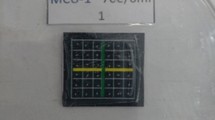Summary
Populations ofDrosophila melanogaster kept at high population density (K-selected) for 125 generations have higher larval viability than populations kept at low densities (r-selected) when both are raised under crowded conditions. In additionK-selected adults that emerge from crowded cultures are larger than theirr-selected counterparts. These differences cannot be explained by differences in efficiency of food use. The minimum food required for successful pupation is actually greater in theK-selected populations. I conjecture that there may be a trade-off between minimum food requirements and competitive ability, which has changed substantially in theK-selected populations. The possibility thatK-selected larvae can dig more more deeply and gain access to unused food is examined and rejected as a possible explanation of the viability differences. Evidence is provided supporting the hypothesis that the differences in viability may be due to an increased tendency of theK-selected larvae to pupate off the surface of the medium.
Similar content being viewed by others
References
Ayala, F. J. (1965) Evolution of fitness in experimental populations ofDrosophila serrata.Science 150, 903–5.
Ayala, F. J. (1968) Genotype, environment and population numbers.Science 162, 1453–9.
Bakker, K. (1961) An analysis of factors which determine success in competition for food among larvae ofDrosophila melanogaster.Arch. Neerl. Zool. 14, 200–81.
Bierbaum, T. J., Mueller, L. D. and Ayala, F. J. (1989) Density-dependent life history evolution inDrosophila melanogaster, Evolution 43, 382–92.
Bishop, Y. M. M., Fienberg, S. E. and Holland, P. W. (1975)Discrete Multivariate Analysis. MIT Press, Cambridge.
Botella, L. M., Moya, A., González, M. C. and Ménsua, J. L. (1985) Larval stop, delayed development and survival in overcrowded cultures ofDrosophila melanogaster: effect of urea and uric acid.J. Insect Physiol. 31, 179–85.
Boyce, M. S. (1984) Restitution ofr- andK-selection as a model of density-dependent natural selection.Ann. Rev. Ecol. Syst. 15, 427–47.
Burnet, B., Sewell, D. and Bos, M. (1977) Genetic analysis of larval feeding behavior inDrosophila melanogaster II. Growth relations and competition between selected lines.Genet. Res. Camb. 30, 149–61.
Buzzati-Traverso, A. A. (1955) Evolutionary changes in components of fitness and other polygenic traits inDrosophila melanogaster populations.Heredity 9, 153–86.
Chiang, H. C. and Hodson, A. C. (1950) An analytical study of population growth inDrosophila melanogaster.Ecol Monogr. 20, 173–206.
Efron, B. (1979a) Bootstrap methods: another look at the jackknife.Annals of Statistics 6, 1–26.
Efron, B. (1979b) Computers and the theory of statistics: thinking the unthinkable.Society for Industrial and Applied Mathematics Review 21, 460–80.
Efron, B. (1981) Nonparamethric standard errors and confidence intervals.Canadian Journal of Statistics 9, 139–72.
Godoy-Herrera, R. (1979) Selection for digging behavior inDrosophila melanogaster larvae.Behav. Genet. 8, 474–9.
Joshi, A. and Mueller L. D. (1988) Evolution of higher feeding rate inDrosophila due to density-dependent natural selection.Evolution 42, 1090–3.
Luckinbill, L. S. (1978)r-andK-selection in experimental populations ofEscherichia coli.Science 202, 1201–3.
MacArthur, R. H. (1962) Some generalized theorems of natural selection.Proc. Natl. Acad. Sci. USA 48, 1893–7.
MacArthur, R. H. and Wilson, E. O. (1967)The Theory of Island Biogeography. Princeton University Press, Princeton, N.J.
McEvoy, P. B. (1984) Increase in respiratory rate during feeding in larvae of the cinnabar mothTyria jacobaeae.Physiol. Ent. 9, 191–5.
Ménsua, J. L. and Moya, A. (1983) Stopped development in overcrowded cultures.Heredity 51, 347–52.
Moya, A. and Botella, L. M. (1985) Larva-to-adult and pupa-to-adult mortality dynamics in crowded cultures ofDrosophila melanogaster.Genetica.67, 201–7.
Mueller, L. D. (1987) Evolution of accelerated senescence in laboratory populations ofDrosophila.Proc. Natl. Acad. Sci. USA 84, 1974–7.
Mueller, L. D. (1988a) Density-dependent population growth and natural selection in food limited environments: theDrosophila model.Amer. Natur. 132, 786–809.
Mueller, L. D. (1988b) Evolution of competitive ability inDrosophila due to density-dependent natural selection.Proc. Natl. Acad. Sci. USA 85, 4383–6.
Mueller, L. D. and Ayala, F. J. (1981). Trade-off betweenr-selection andK-selection inDrosophila populations.Proc. Natl. Acad. Sci. USA 78, 1303–5.
Mueller, L. D. and Sweet, V. F. (1986) Density-dependent natural selection inDrosophila: evolution of pupation height.Evolution 40, 1354–6.
Nunney, L. (1983) Sex differences in larval competition inDrosophila melanogaster: the testing of a competition model and its relevance to frequency dependent selection.Amer. Natur. 121, 67–93.
Rosenzweig, M. L. (1987) Community organization from the point of view of habitat selectors. InOrganization of Communities: Past and Present (J. H. R. Gee and P. S. Giller, eds) pp. 569–90. Blackwell Scientific Publications, Oxford, UK.
Rougharden, J. (1971) Density dependent natural selection.Ecology 52, 453–68.
Sewell, D., Burnet, B. and Connolly, K. (1975) Genetic analysis of larval feeding behavior inDrosophila melanogaster.Genet. Res. Camb. 24, 163–73.
Slansky, F. and Feeny, P. (1977) Stabilization of the rate of nitrogen accumulation by larvae of the cabbage butterfly on wild and cultivated food plants.Ecol. Monogr. 47, 209–28.
Wright, S. (1977)Evolution and the Genetics of Populations. Vol. 3: Experimental Results and Evolutionary Deductions. The University of Chicago Press, Chicago, Illinois, USA.
Author information
Authors and Affiliations
Rights and permissions
About this article
Cite this article
Mueller, L.D. Density-dependent natural selection does not increase efficiency. Evol Ecol 4, 290–297 (1990). https://doi.org/10.1007/BF02270928
Issue Date:
DOI: https://doi.org/10.1007/BF02270928




